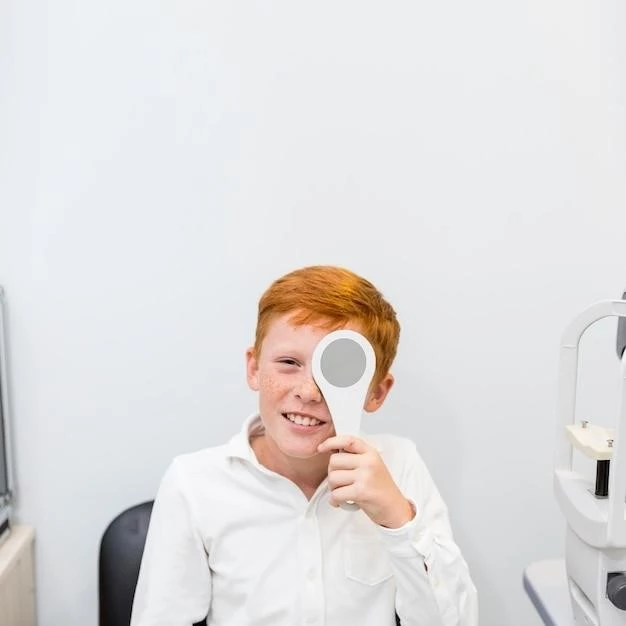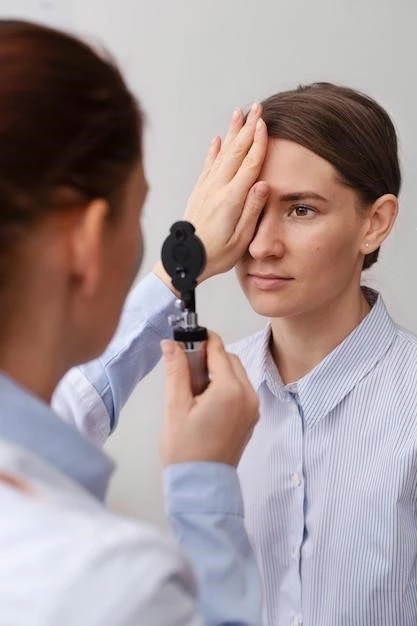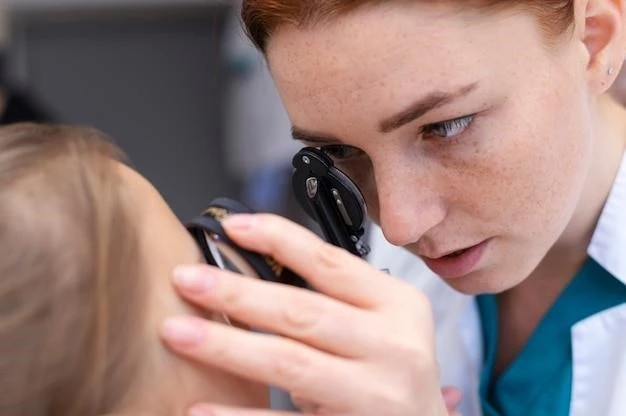Article Plan⁚ Disease — Microcephaly Mental Retardation Retinopathy
Introduction to Microcephaly, Mental Retardation, and Retinopathy
Microcephaly, mental retardation, and retinopathy are conditions that can have significant implications for individuals and their families. Microcephaly refers to a condition where the head size is significantly smaller than average due to improper brain development. Mental retardation is characterized by intellectual disability and limitations in adaptive behaviors. Retinopathy involves damage to the retina of the eye, which can affect vision.
Understanding these conditions is crucial for proper management and support. Syndromes like Mirhosseini-Holmes-Walton and Cohen share common characteristics like microcephaly, mental retardation, and retinal abnormalities. Ocular abnormalities in microcephaly may include chorioretinal degeneration and optic disc abnormalities.
The association of microcephaly with chorioretinopathy has been documented in various studies, highlighting the complexity of these conditions. Genetic factors play a role in the inheritance of these conditions, with consanguinity potentially increasing the risk.
Diagnosis of these conditions involves clinical evaluations, genetic testing, and ophthalmic examinations. Treatment options focus on supportive care, early intervention services, and addressing specific symptoms. Management strategies aim to enhance quality of life and functional abilities.
Research studies continue to explore the underlying causes and potential interventions for microcephaly, mental retardation, and retinopathy. Building awareness and access to support resources are essential for patients and families facing these challenges.
Emphasizing the importance of early detection, multidisciplinary care, and ongoing research efforts can improve outcomes and provide hope for individuals affected by these conditions.
Syndromes Related to the Condition
Syndromes related to microcephaly, mental retardation, and retinopathy encompass a spectrum of complex genetic disorders. Mirhosseini-Holmes-Walton and Cohen syndromes are notable for common characteristics such as severe mental retardation, microcephaly, and retinal abnormalities.
Ocular abnormalities in microcephaly may include chorioretinal degeneration, pigmentary changes, optic disc coloboma, microphthalmia, strabismus, nystagmus, among others. The genetic inheritance of these syndromes often involves consanguinity, pointing towards possible autosomal recessive patterns.
Research has documented the association of microcephaly with chorioretinopathy, indicating a potential link between brain and eye development. Syndromes like Mirhosseini-Holmes-Walton present with a distinctive combination of microcephaly, retinal degeneration, and intellectual disability.
Understanding the manifestations of these syndromes is essential for accurate diagnosis and appropriate management. Consulting with healthcare professionals and genetic counselors can provide valuable insights for families affected by these complex conditions.
Exploring the genetic underpinnings and clinical presentations of these syndromes can aid in early detection, intervention, and support for individuals with microcephaly, mental retardation, and retinopathy. Education and awareness play key roles in improving outcomes and enhancing the quality of life for affected individuals.
Genetic Inheritance and Consanguinity

Genetic inheritance and consanguinity play significant roles in the manifestation of conditions like microcephaly, mental retardation, and retinopathy. Syndromes such as Mirhosseini-Holmes-Walton and Cohen suggest autosomal recessive inheritance, particularly in cases with consanguineous parents.
Studies have shown that the presence of consanguinity can increase the likelihood of autosomal recessive genetic patterns associated with severe mental retardation, microcephaly, and retinal abnormalities. Understanding the genetic basis of these conditions can guide diagnostic approaches and family counseling.
Researchers have reported on the association of microcephaly with chorioretinopathy and mental retardation in individuals with consanguineous backgrounds. The genetic component underscores the importance of genetic testing and counseling in families with a history of these conditions.
Exploring the genetic underpinnings of microcephaly and associated conditions can provide valuable insights into disease mechanisms and potential therapeutic targets. Genetic counseling can help families understand the risks, inheritance patterns, and management options for these complex conditions.
Collaboration with genetic professionals, healthcare providers, and support networks is essential for individuals and families navigating the complexities of genetic inheritance and consanguinity related to microcephaly, mental retardation, and retinopathy. Stay informed and seek expert guidance when considering genetic testing, family planning, and management strategies.
Clinical Features and Symptoms
Individuals with conditions like microcephaly, mental retardation, and retinopathy may present with a range of clinical features and symptoms. Clinical manifestations often include severe mental retardation, microcephaly (abnormally small head size), and various ocular abnormalities such as chorioretinal degeneration, optic disc anomalies, and pigmentary changes.
Patients may exhibit symptoms like intellectual disabilities, reduced cognitive function, and visual impairments due to retinal abnormalities. Ocular conditions like retinitis pigmentosa, scoliosis, and chorioretinal dysplasia are commonly associated with these syndromes.
Microcephaly with chorioretinopathy has been reported in individuals showing signs of congenital infection, emphasizing the interplay between brain and eye development. Some cases feature the combination of microcephaly and lacunar depigmentation of the retina, indicating the complexity of these conditions.
Clinicians may also observe symptoms like hypogonadism, hypotonia, polydactyly, cleft palate, and varying degrees of intellectual disability in individuals with related syndromes. The presence of retinopathy, microphthalmia, and hypoplastic fovea further adds to the clinical spectrum of these conditions.
Early detection and comprehensive evaluation of clinical features are crucial for accurate diagnosis and tailored management strategies. Understanding the diverse symptoms associated with microcephaly, mental retardation, and retinopathy can aid healthcare professionals in providing personalized care and support to affected individuals and their families.
Ocular Abnormalities in Microcephaly
Ocular abnormalities in individuals with microcephaly can encompass a range of conditions affecting the eyes. These may include chorioretinal degeneration, pigmentary changes, optic disc coloboma and atrophy, falciform retinal folds, microphthalmia, hypoplastic fovea, strabismus, and nystagmus.
The interplay between neural and ocular development is hypothesized to contribute to the varied ocular anomalies observed in microcephaly. Studies have suggested that the developmental processes of the brain and the eyes are closely linked, with abnormalities in one often impacting the other.
Instances of microcephaly with chorioretinopathy, particularly those indicating congenital infection, have been documented in the literature. Cases where microcephaly is associated with chorioretinopathy and mental retardation highlight the intricate relationship between brain size, eye health, and cognitive function.
In some reports, individuals have been described as having microcephaly and lacunar depigmentation of the retina, showcasing the diverse ocular manifestations seen in conjunction with reduced head size. The combination of microcephaly and various retinal abnormalities underscores the complexity of these conditions.
Consulting with ophthalmologists and other healthcare professionals for regular eye examinations and monitoring can help in early detection and tailored management of ocular abnormalities in individuals with microcephaly. Understanding the specific ocular features associated with microcephaly is crucial for personalized care and support.
Association of Microcephaly with Chorioretinopathy
The association of microcephaly with chorioretinopathy highlights the intricate relationship between reduced head size and retinal abnormalities. Research suggests a potential link between congenital infections and the development of microcephaly with chorioretinopathy, particularly when observed alongside mental retardation.
In reported cases, individuals have presented with microcephaly and lacunar depigmentation of the retina, indicating a complex interplay between brain structure and ocular health. The combination of chorioretinopathy, microcephaly, and mental retardation emphasizes the need for comprehensive assessments and tailored interventions.
Studies have described microcephaly and mental retardation occurring alongside non-pigmentary retinopathy in siblings of consanguineous parents, underscoring the genetic and familial factors at play. Understanding the association between microcephaly and retinal abnormalities is crucial for accurate diagnosis and management.
Consulting with experts in ophthalmology and genetics can provide valuable insights for individuals with microcephaly and chorioretinopathy. Early detection, regular monitoring, and individualized care plans are essential for addressing the complexities of these conditions and optimizing outcomes.
Diagnosis and Differential Diagnoses
Diagnosing conditions like microcephaly, mental retardation, and retinopathy involves comprehensive assessments and differential diagnoses. The presence of severe mental retardation, microcephaly, retinal pigmentary degeneration, and spastic cerebral palsy may suggest syndromes like Mirhosseini-Holmes-Walton.
Medical professionals consider conditions like Hallermann-Streiff syndrome, congenital nuclear cataracts, and retinitis pigmentosa in differential diagnoses for individuals with microcephaly, mental retardation, and ocular abnormalities. Differentiating between genetic syndromes and acquired retinal conditions is crucial for appropriate management.
Genetic testing, ophthalmic examinations, and neurodevelopmental assessments are key components of the diagnostic process. Variants like microcephaly with chorioretinopathy necessitate specialized evaluations to differentiate from other retinal dystrophies or ocular anomalies.
Research on conditions like microcephaly with chorioretinopathy underscores the importance of understanding the overlap between genetic factors, brain development, and ocular health. In cases of consanguinity, the risk of autosomal recessive inheritance patterns should be considered in differential diagnoses.
Consulting with a multidisciplinary team comprising geneticists, ophthalmologists, and neurologists can aid in accurate diagnosis and formulation of individualized treatment plans. Vigilance in recognizing the diverse clinical presentations associated with microcephaly, mental retardation, and retinopathy is essential for effective management and support.
Treatment Options and Management Strategies
When addressing conditions like microcephaly, mental retardation, and retinopathy, a multidisciplinary approach to treatment and management is vital. Supportive care focusing on cognitive development, adaptive skills, and vision preservation plays a central role.
Early intervention services, including physical therapy, speech therapy, and special education programs, can enhance the quality of life for individuals with these conditions. Tailored educational strategies and behavioral therapies catered to the specific needs of the individual can promote learning and skill development.
Regular ophthalmic evaluations are essential for monitoring ocular abnormalities in microcephaly, such as chorioretinal degeneration and optic disc anomalies. Interventions like corrective lenses, visual aids, and low-vision services can support individuals with retinal abnormalities and vision impairments.
Genetic counseling for families affected by genetic syndromes associated with microcephaly, mental retardation, and retinopathy can provide valuable information on inheritance patterns, family planning, and potential risks. Understanding the genetic basis of these conditions can guide personalized care plans.
Collaboration with healthcare providers, educators, therapists, and community support services is crucial in developing a comprehensive care network for individuals and families affected by microcephaly, mental retardation, and retinopathy. By embracing a holistic approach to treatment and management, individuals can achieve their full potential and lead fulfilling lives.
Epidemiology and Prevalence
Microcephaly, mental retardation, and retinopathy are conditions that have varying prevalence rates worldwide. The syndrome of pigmentary retinal degeneration, cataract, microcephaly, and severe mental retardation has been linked to consanguineous families, indicating autosomal recessive inheritance patterns.
Studies have reported associations between microcephaly and retinal abnormalities, emphasizing the need for genetic counseling and comprehensive evaluations. Syndromes like Mirhosseini-Holmes-Walton and Cohen share common characteristics such as microcephaly, mental retardation, and retinal pigmentary degeneration.
Ocular abnormalities in microcephaly, including chorioretinal degeneration and optic disc anomalies, suggest an overlap between neural and ocular development. Genetic factors and consanguinity may contribute to the prevalence and inheritance of these complex conditions.
The association of microcephaly with chorioretinopathy, particularly in cases suggesting congenital infection, highlights the complexity of these conditions. Collaborating with healthcare professionals and genetic experts can aid in early detection, management, and support for individuals and families affected by these syndromes.
Understanding the epidemiology and prevalence of microcephaly, mental retardation, and retinopathy is essential for tailored interventions, genetic counseling, and ongoing research to improve outcomes and quality of life for those impacted by these complex conditions.
Impact on Cognitive Function and Development
Conditions like microcephaly, mental retardation, and retinopathy can profoundly impact cognitive function and development. Severe mental retardation, characterized by significant intellectual disabilities, challenges adaptive skills, and can hinder learning and daily activities.
Individuals with microcephaly may experience difficulties in cognitive processing, speech, and language development. The presence of retinal abnormalities and chorioretinopathy can affect visual perception, potentially impacting learning and environmental interactions.
The complex interaction between neural development and ocular anomalies in microcephaly and associated syndromes underscores the challenges individuals may face in cognitive and visual domains. Cognitive impairments, coupled with vision-related issues, can influence educational outcomes and social interactions.
Early intervention, specialized education programs, and supportive therapies targeting cognitive and visual function can help mitigate the impact of these conditions on overall development. Collaborating with healthcare professionals, educators, and therapists is essential in providing individualized care and maximizing cognitive potential.
Understanding the multifaceted impact of microcephaly, mental retardation, and retinopathy on cognitive function and development is crucial for implementing tailored interventions, educational support, and holistic care to optimize outcomes and quality of life for affected individuals.
Research Studies and Recent Findings
Recent research studies have shed light on the complex interplay between microcephaly, mental retardation, and retinopathy. The syndrome characterized by pigmentary retinal degeneration, cataract, microcephaly, and severe mental retardation has been linked to consanguineous families, suggesting autosomal recessive inheritance.
Studies have shown shared characteristics between syndromes like Mirhosseini-Holmes-Walton and Cohen, including microcephaly, retinal pigmentary degeneration, and severe mental retardation. Ocular abnormalities in microcephaly, such as chorioretinal degeneration and optic disc anomalies, highlight the intricate connection between neural and ocular development.
The association of microcephaly with chorioretinopathy, particularly in cases suggesting congenital infection, underlines the complexity of these conditions. Variability in the clinical presentation, like microcephaly with retinal pigmentary changes in consanguineous siblings, challenges diagnostic approaches.
Genetic studies have identified mutations associated with conditions like microcephaly with chorioretinopathy, further elucidating the underlying genetic mechanisms. Understanding the genetic basis of these conditions is crucial for accurate diagnosis, intervention, and genetic counseling.
Recent findings highlight the importance of ongoing research to unravel the genetic and molecular underpinnings of microcephaly, mental retardation, and retinopathy. These studies play a crucial role in enhancing our understanding of these conditions and paving the way for personalized treatment strategies and improved outcomes.
Support Resources for Patients and Families

Individuals and families affected by microcephaly, mental retardation, and retinopathy can benefit from accessing a range of support resources tailored to their specific needs. Support groups, online forums, and community organizations can offer emotional support, information sharing, and solidarity in facing the challenges associated with these conditions.
Genetic counseling services can provide valuable insights into the inheritance patterns, risks, and management options for families affected by these complex syndromes. Seeking guidance from genetic counselors can help individuals make informed decisions about family planning and care strategies.
Educational resources focusing on cognitive development, adaptive skills, and vision support are essential for individuals with these conditions. Special education programs, speech therapy, and physical therapy services can enhance learning outcomes and quality of life.
Collaborating with healthcare professionals, therapists, and educators is key in developing personalized care plans and interventions. Support networks can offer guidance on navigating medical appointments, accessing critical services, and fostering a supportive environment for individuals and families.
Empowering individuals with microcephaly, mental retardation, and retinopathy through knowledge, support, and advocacy can help improve their well-being and ensure a comprehensive approach to care. Remember, you are not alone, and reaching out for support can make a significant difference in your journey.
and Future Perspectives
In conclusion, the intricate relationship between microcephaly, mental retardation, and retinopathy underscores the challenges faced by individuals and families dealing with these complex conditions. Recent research has advanced our understanding of the genetic, clinical, and ocular aspects of these syndromes.
Support resources, such as genetic counseling services, educational programs, and community networks, offer vital assistance for those affected. Collaborating with healthcare professionals and accessing tailored interventions can enhance outcomes and quality of life for individuals with these conditions.
Looking ahead, future research endeavors should continue to unravel the genetic underpinnings and molecular mechanisms driving microcephaly, mental retardation, and retinopathy. By delving deeper into the etiology and pathogenesis, innovative treatment strategies and personalized care plans can be developed to improve the lives of those impacted by these conditions.
Empowering individuals through education, multidisciplinary support, and advocacy efforts holds promise for fostering resilience and optimizing cognitive development in the face of these challenges. Together, we can strive to enhance awareness, accessibility to resources, and holistic care for a brighter future for individuals affected by microcephaly, mental retardation, and retinopathy.
